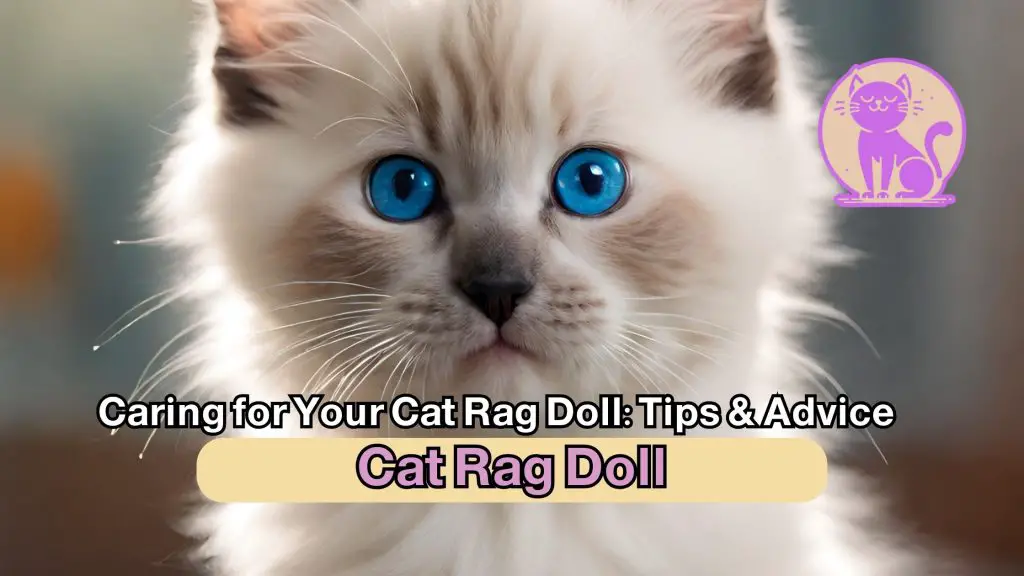Embracing the journey of ragdoll cat companionship begins with understanding the nuances of cat rag doll care. These serene felines, known for their endearing personalities and striking blue eyes, require attentive ragdoll kitten essentials to flourish. This guide unveils the secrets to enhancing your life with a Ragdoll by your side, focusing on the importance of cat rag doll grooming and ragdoll cat health maintenance. Join us as we navigate the rewarding path of nurturing your Ragdoll’s well-being, ensuring that they remain not just a pet, but a cherished member of your family.
The Unique Qualities of the Ragdoll Cat Breed
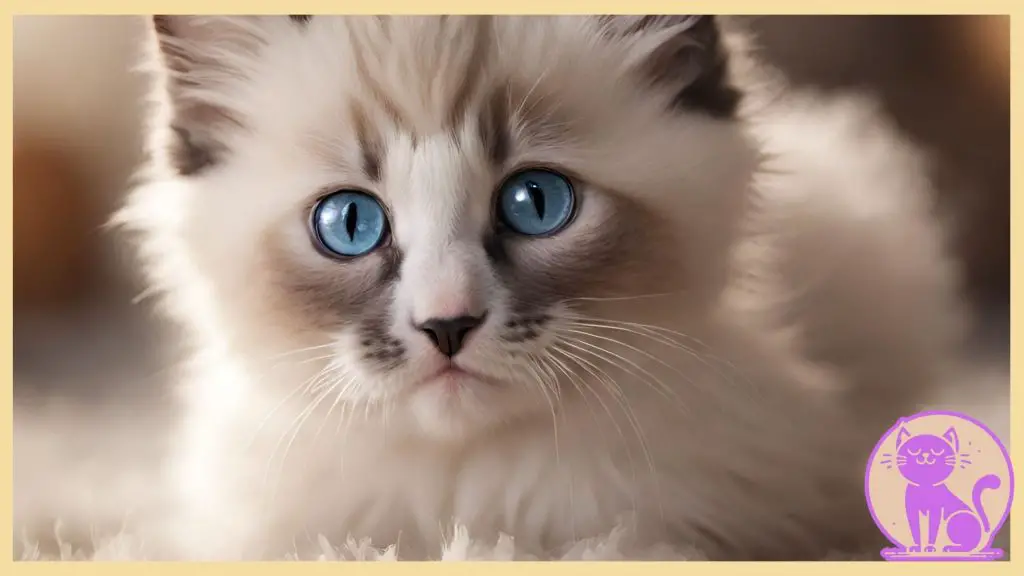
Beloved for their serene and charming nature, the ragdoll cat breed presents a symphony of characteristics that endears them to feline aficionados globally. As we explore further, the defining attributes of these majestic creatures come to light, including their captivating ragdoll cat colors, which have garnered a special place in the hearts of many.
Ragdoll Cat Characteristics
The ragdoll cat is distinguished by a myriad of physical traits that set them apart from other feline species. They boast a large, sturdy frame complemented by striking blue eyes that seem to gaze into the soul. Their fur is not just a coat, but a plush, silken tapestry offered in various hues and patterns. The coat has a variety of ragdoll cat colors that range from the classic seal and blue to the rare chocolate and lilac, often marked in colorpoint, mitted, or bicolor patterns. These feline beauties are a marvel to behold and an even greater delight to cuddle.
Understanding the Ragdoll Cat Personality
It’s not just their luxurious fur that wins over the hearts of enthusiasts, but the ragdoll cat personality is equally compelling. Renowned for their gentle and laid-back demeanor, ragdolls thrive on affection, often following their owners around like a shadow or flopping into their laps at the slightest invitation. Their adaptability and sweet nature make them perfect companions across a diverse range of households. Perhaps the most enchanting feature is how they balance their playfulness with an impressive degree of tranquility, making them ideal pets for both active families and those seeking a calm friend.
Essential Ragdoll Cat Care Guidelines
Devoted ragdoll cat owners understand that meticulous attention to ragdoll cat care is a cornerstone to ensuring the perpetual health and happiness of their plush companions. The key components of care include proper nutrition, maintaining a clean habitat, and facilitating an active lifestyle. By adhering to these central tenets, owners can contribute significantly to optimal ragdoll cat health and gratifying companionship.
- Feeding: Implement a regular feeding schedule with high-quality cat food that meets all the nutritional needs of a ragdoll.
- Cleanliness: Keep the cat’s living area—including litter boxes—scrupulously clean to prevent the spread of disease and odor.
- Activity: Engage your ragdoll cat in daily play to stimulate their mind and encourage physical exercise, which is vital for their wellbeing.
- Health Checks: Regular veterinary visits for check-ups and vaccinations are critical to prevent and address health issues.
Attending to the ragdoll cat maintenance needs involves more than just fulfilling the basic care requirements. It’s about fostering a nurturing environment where the affectionate nature of ragdolls can thrive. Below, find a table that captures the summarized necessities for ragdoll cat care:
| Care Aspect | Details | Frequency |
|---|---|---|
| Nutrition | Well-balanced diet formulated for large breed cats | Daily |
| Litter Box Cleaning | Maintain cleanliness to encourage use and prevent diseases | 1-2 times a day |
| Play and Exercise | Interactive toys and activities to promote agility | Daily |
| Health Monitoring | Regular vet visits for immunizations and check-ups | Annually or as recommended |
Empowered with these guidelines, ragdoll cat owners will be well-equipped to ensure their furry friends lead a fulfilling and vigorous life. Remember, consistent ragdoll cat maintenance is not just a duty; it’s an act of love that enriches both the cat’s life and yours.
The Importance of Proper Ragdoll Cat Grooming
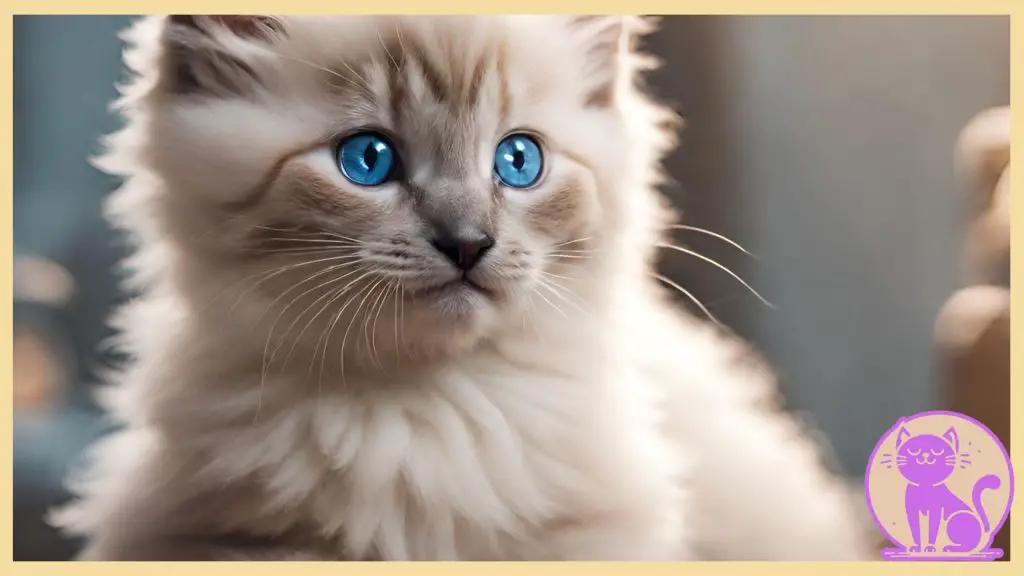
Ensuring your Ragdoll cat’s coat remains sleek, mat-free and beautiful requires a routine approach to grooming. These cherished felines are famous for their striking, semi-longhair coats, and while they are less prone to matting than other long-haired breeds, regular maintenance is vital. Beyond basic cleanliness, grooming sessions also deepen the bond between you and your feline friend, turning a necessary task into a moment of connection.
Ragdoll Cat Shedding and How to Manage It
One of the realities of owning a Ragdoll is dealing with their shedding. Yet, by employing effective cat grooming techniques and understanding the periodic nature of ragdoll cat shedding, this issue can be managed efficiently. Spring and fall are typically high-shedding periods, prompting the use of specialized grooming tools that can help trap loose fur before it ends up on your furniture.
- Frequent brushing with a fine-toothed comb or a slicker brush can significantly diminish shedding.
- Investing in a de-shedding tool during peak shedding seasons is recommended for managing undercoat turnout.
- Regular baths can also aid in loosening dead fur, though be cautious of over-bathing and drying out their skin.
Grooming Tools and Techniques for Your Ragdoll
Choosing the right grooming tools is paramount for effective Ragdoll cat care. Opt for tools designed for semi-long hair to navigate through their silky fur with ease.
| Tool | Use | Benefit |
|---|---|---|
| Slicker brush | General brushing | Removes tangles and loose fur |
| De-shedding rake | Removing loose undercoat | Minimizes shedding and prevents matting |
| Grooming gloves | Gentle grooming | Provides tactile bonding while collecting loose fur |
As for cat grooming techniques, start by brushing your Ragdoll’s coat in the direction of hair growth to smooth out any knots. Gentle strokes will suffice, as heavy-handed brushing may irritate their skin. Additionally, remember to give extra attention to areas prone to matting such as the armpits, behind the ears, and beneath the collar. Through consistent and tender grooming, you will not only preserve the natural luster of your Ragdoll’s coat but also strengthen your loving companionship.
Balanced Nutrition and Feeding Schedule for Ragdoll Cats
A ragdoll cat diet thrives on balance and timing, ensuring they receive all the necessary nutrients to maintain optimal health. It’s more than just picking the right cat food; it’s also about establishing a feeding schedule that aligns with their specific energy needs at different stages of their lives. When considering balanced cat nutrition, a variety of factors come into play, including age, weight, and activity level. A well-planned diet is crucial in preventing obesity and other health issues in these majestic cats.
- Quality Over Quantity: Opting for nutrient-rich foods specially formulated for the ragdoll breed can aid in sustaining their lush coat and overall ragdoll cat health.
- Measuring Meals: Precise portion control is crucial. Overfeeding a ragdoll can lead to weight gain, given their propensity for a sedentary lifestyle.
- Diverse Diet: Incorporating both wet and dry food can provide a range in texture, keeping mealtime interesting and hydration levels high.
- Frequent Feeding: Initially, kittens require small, frequent meals, but as they grow, transitioning to an adult feeding schedule is necessary for their health.
Consistency in the feeding process not only helps regulate their metabolism but also establishes a routine, reducing anxiety around mealtime. Here’s a table reflecting an ideal feeding guide for ragdoll cats:
| Age | Food Type | Meals Per Day | Portion Size |
|---|---|---|---|
| 2-4 months | Kitten Formula | 4-5 | 1/4 cup |
| 4-9 months | Kitten Formula | 3-4 | 1/3 cup |
| 9-12 months | Transition to Adult Formula | 2-3 | 1/3-1/2 cup |
| Adult | Adult Cat Food | 2 | 1/2-3/4 cup |
| Senior (7+ years) | Senior Formula | 2 | 1/2-3/4 cup |
Adjustments to this feeding schedule might be required based on your ragdoll’s health and activity level. Consultation with a veterinarian for personalized guidance should be a part of your proactive approach to their dietary needs. A robust, tailored diet significantly impacts the overall vitality and longevity of your ragdoll cat, enabling them to live a full, happy life by your side.
Health Monitoring: Regular Vet Check-Ups for Your Cat Rag Doll
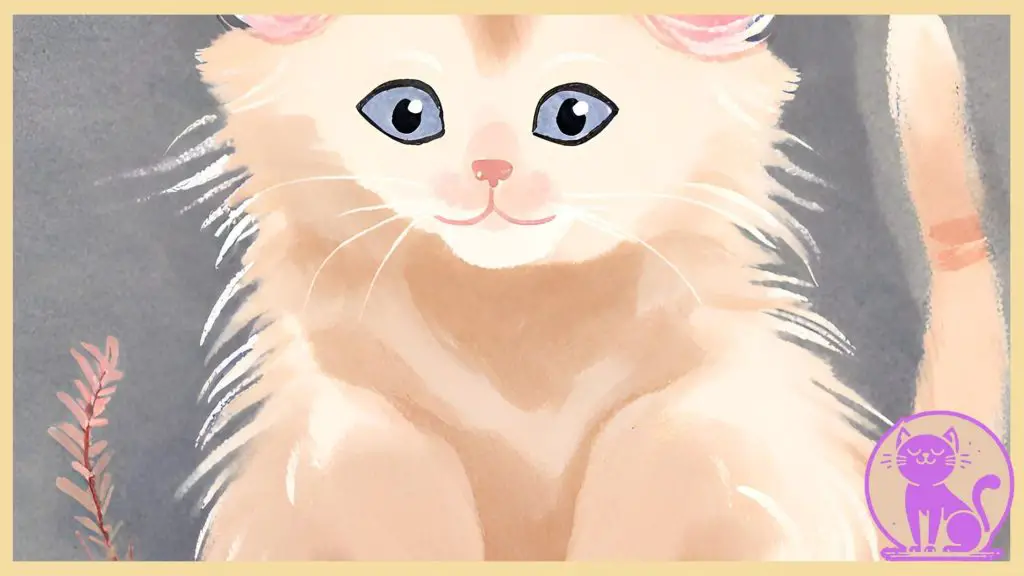
Ensuring the longevity and happiness of your ragdoll cat starts with a commitment to regular health monitoring. A core component of maintaining excellent ragdoll cat health is scheduling routine vet check-ups. These visits are crucial in detecting early signs of any health concerns, ensuring your feline friend receives the best care possible.
Ragdoll Cat Health Concerns and Prevention
Ragdoll cats are generally healthy, but like all breeds, they have their own set of potential health issues. Heart conditions such as hypertrophic cardiomyopathy, kidney issues, and certain types of cancer are among the concerns. Preventative care through regular vet visits can help in early detection and management of these conditions. A vet can also guide you on the best practices for feeding, exercise, and care that are specific to the ragdoll breed.
The Importance of Vaccinations and Parasite Control
Keeping your ragdoll cat up-to-date with their vaccinations is essential. Vaccines provide protection against various diseases, including rabies, feline distemper, and feline leukemia. Similarly, parasite control involves treatments for preventing fleas, ticks, and worms, ensuring your cat remains free from discomfort and the potential complications these pests can bring.
| Vaccine/Parasite Control | Benefits | Recommended Schedule |
|---|---|---|
| Rabies Vaccine | Protects against rabies, a fatal disease. | Initial vaccine by 4 months, then every 1-3 years. |
| Feline Distemper Vaccine | Prevents against a highly contagious and often fatal viral infection. | Start at 6-8 weeks, then every 3-4 weeks until 16 weeks old. |
| Feline Leukemia Vaccine | Guards against the leading viral killer in cats. | Beginning at 8-12 weeks, then 3-4 weeks later. Annual boosters are recommended. |
| Flea and Tick Prevention | Prevents flea and tick infestation, which can lead to other health issues. | Monthly treatments, year-round for best protection. |
| Worm Prevention | Protects against various types of intestinal worms. | Discuss with your vet for a tailored schedule according to the cat’s environment and health. |
Regular health check-ups, tailored vaccination schedules, and diligent parasite control form a shield for your ragdoll’s health, offering peace of mind to you as an owner. By attending to these measures, you ensure a loving and nurturing environment for your cherished cat rag doll.
Creating a Stimulating Environment for a Ragdoll Cat

Understanding ragdoll cat behavior is key to nurturing a happy and healthy pet. Known for their docile nature, ragdolls thrive in a stimulating cat environment that meets their need for interactive and playful activities. A well-considered arrangement of toys and accessories can encourage physical exercise and mental pursuits, vital for the breed’s overall welfare.
- Cat trees and climbing structures provide the perfect outlet for climbing and scratching, satisfying the ragdoll’s instinctual behaviors.
- Puzzle feeders challenge their intellect and mimic the foraging aspect of their ancestral hunting rituals.
- Interactive toys, like laser pointers and feather wands, cater to their playful side and enable bonding during playtime.
Let’s explore some top toys and essentials to create an enriching habitat:
| Item | Description | Benefits |
|---|---|---|
| Multi-Level Cat Tree | A tall structure with multiple platforms and scratching posts. | Encourages climbing and provides a private space to retreat. |
| Interactive Laser Toy | A battery-operated laser pointer that creates unpredictable patterns. | Stimulates hunting instincts and provides vigorous exercise. |
| Puzzle Feeder | A toy that dispenses treats as the cat solves a simple puzzle. | Combines snack time with mental stimulation. |
| Window Perch | A secure platform attached to a window, offering outdoor views. | Allows observation of the outside world, a natural entertainment. |
| Chaser Toys | Small, lightweight toys that can be chased and batted around. | Facilitates active play and satisfies the chase drive. |
It’s crucial not to overlook the simple acts of interaction, such as playing fetch or teaching tricks, which can foster a strong bond between you and your ragdoll cat while also keeping boredom at bay. Always remember, a stimulating environment is paramount for a ragdoll’s contentment and well-being.
Understanding and Managing Ragdoll Cat Behavior
Navigating the nuances of ragdoll cat personality involves a dedicated approach to cat behavior management and adherence to effective training techniques. Familiarizing oneself with the essentials of ragdoll cat socialization also plays a crucial part in fostering a well-adapted and content feline companion. Below, we delve into strategies that support harmonious living with these regal and personable pets.
Training Your Ragdoll Cat: Tips & Techniques
Despite their laid-back demeanor, the intelligent ragdoll cat is highly capable of learning through positive reinforcement and patience. It’s important to start training early to leverage their natural curiosity.
- Use treats and praises as rewards for good behavior, reinforcing the actions you desire without resorting to punishment.
- Keep training sessions short and engaging to maintain their interest without causing overstimulation or fatigue.
- Introduce clicker training to build a clear means of communication and establish routine behaviors such as sitting or staying on command.
- Litter box training should be consistent, ensuring that the litter box is always clean and placed in a quiet, accessible location.
While ragdoll cats are inherently docile, they benefit greatly from the cognitively stimulating exercises training provides, promoting both mental and physical well-being.
Socialization Aspects of Ragdoll Cats
Efficient socialization helps mitigate potential anxiety and fosters a well-rounded ragdoll cat. This process is essential to ensure that your cat feels safe and is affable with other pets and humans.
- Introduce your ragdoll cat to new experiences gradually, such as meeting new people or exploring different parts of your home.
- Schedule regular playtime with other friendly pets, ensuring that encounters are supervised and positive.
- Encourage gentle handling from an early age to cultivate a cat that’s comfortable with being held and petted.
- Employ desensitization methods for common stressors, like the carrier or car rides, by associating them with positive outcomes.
Ragdoll cats thrive when their social needs are met, displaying their affectionate nature more openly and integrating into family life seamlessly. Employing these training and socialization techniques not only conditions optimal behavior but also deepens the bond between you and your cherished ragdoll cat.
Choosing a Ragdoll Kitten: What Potential Owners Should Know
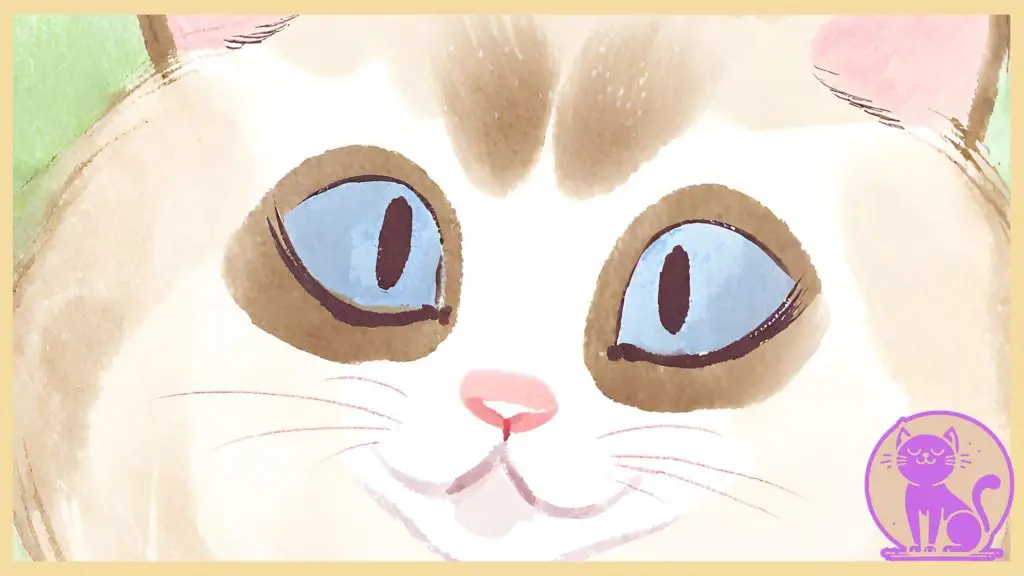
Embarking on the journey to bring a ragdoll kitten into your home is an exciting venture filled with important decisions. Among the lush coats and endearing personalities lie key considerations that prospective pet owners must heed to ensure a responsible and joyous adoption or purchase.
Identifying Reputable Ragdoll Cat Breeders
Selecting a trustworthy ragdoll cat breeder is the cornerstone of finding a healthy and well-socialized ragdoll kitten. Look for breeders who prioritize the health, temperament, and genetic screening of their kittens. They should offer a transparent view of their breeding practices, including living conditions and pedigree documentation. Visiting breeders in person and seeking reviews from past customers can further validate the reputability of a breeder.
Ragdoll Cat Price, Adoption, and Initial Costs
A question that often arises is about the cost of a ragdoll kitten—prices may vary significantly. Besides initial purchase or adoption fees, consider the initial veterinary care, including vaccinations, spaying or neutering, and any necessary genetic testing. It’s not just about the ragdoll cat price; it’s about the commitment to ongoing care.
For those considering ragdoll cat adoption, many rescue organizations specialize in rehoming this breed. Adoption is a wonderful way to give a ragdoll cat a second chance at a loving home, though it may require patience to find a kitten through this route.
| Consideration | Purchase | Adoption |
|---|---|---|
| Price Range | $800 – $3000 | $75 – $200 |
| Initial Veterinary Care | Often included | Varies by organization |
| Genetic Screening | Typically provided by breeder | May not be available |
| Ongoing Care Costs | Similar for both | Similar for both |
| Availability | Immediate, from ragdoll cat for sale listings | Dependent on rescues |
Whether you fall for a ragdoll kitten for sale or choose the adoption route, prepare your home and heart for a long-term, fulfilling relationship with one of the most charming cat breeds. By prioritizing proper selection and understanding the financial implications, you’ll set the stage for a harmonious life with your new furry family member.
Cat Rag Doll Maintenance: Addressing the Needs of Your Furry Companion
As we have journeyed through the intricacies of caring for a Ragdoll cat, it’s imperative to understand that comprehensive cat rag doll maintenance is not merely a checklist but a lifestyle. It’s about integrating the thoughtful practices of a ragdoll cat care routine seamlessly into your daily life. This includes ensuring your Ragdoll’s coat is lush and mat-free through regular grooming, affirming their health with consistent vet check-ups, and fostering their emotional well-being with your affection and presence.
A healthy ragdoll lifestyle is founded on the pillars of nutrition, exercise, and companionship. Balancing these elements contributes to the overall vitality and happiness of your cat, reflecting in their playful leaps and serene purrs. Remember that the bond you share with your Ragdoll is mirrored in their physical and emotional health, making each moment of care significant to their life’s tapestry.
In closing, the serenity and joy that a Ragdoll cat brings into your home are a reflection of the attentive care you provide. Embracing a holistic approach to their maintenance ensures not just a thriving companion but an enriching addition to your family. As diligent stewards of their well-being, we have the privilege to witness the full splendor of their affectionate nature and the tranquil dynamics they contribute to our lives.
FAQ
Q: How can I ensure the best care for my Ragdoll cat?
A: Ensuring the best care for your Ragdoll cat includes regular grooming, providing a balanced diet, and keeping a clean and stimulating environment. Regular vet check-ups for health maintenance and vaccinations are also essential to their well-being.
Q: What are the unique characteristics of the Ragdoll cat breed?
A: Ragdoll cats are known for their large size, striking blue eyes, and soft, semi-long coats that come in a variety of colors and patterns. They are also distinguished by their affectionate and gentle personalities.
Q: What is the personality of a Ragdoll cat like?
A: Ragdoll cats are typically calm, affectionate, and sociable. They enjoy being close to their human companions and are often described as ‘dog-like’ in their loyalty. They tend to be gentle and are often a good choice for families with children.
Q: How often do Ragdoll cats shed and how do I manage it?
A: Ragdoll cats shed regularly, with increased shedding during the change of seasons. Regular grooming, including brushing a few times a week, can help manage shedding. High-quality grooming tools are recommended to effectively remove loose fur.
Q: What kind of nutrition is ideal for Ragdoll cats?
A: Ragdoll cats thrive on a balanced diet rich in proteins and fats, appropriate to their life stage and health. Portion control and a consistent feeding schedule are crucial to prevent obesity, especially since Ragdolls can be less active indoors.
Q: How often should I take my Ragdoll cat to the vet?
A: Ragdoll cats should have annual wellness check-ups with a veterinarian. If there are any signs of illness or if you have any concerns about their health, they should be taken to the vet immediately. Additionally, keep up with vaccinations and parasite control as recommended.
Q: What can I do to provide a stimulating environment for my Ragdoll cat?
A: To keep your Ragdoll cat stimulated, provide a variety of interactive toys, scratching posts, and perches or cat trees for climbing. Engage in regular playtime sessions to maintain their physical and mental health.
Q: How can I effectively train and socialize my Ragdoll cat?
A: Training your Ragdoll cat can be achieved through positive reinforcement techniques such as treats and praise. Socialization should begin early by exposing your cat to different people, pets, and environments in a gradual, stress-free manner to foster well-adjusted behavior.
Q: What should I look for in reputable Ragdoll cat breeders?
A: Reputable Ragdoll cat breeders should prioritize the health and well-being of their cats, provide health guarantees, and have a transparent breeding process. They should be knowledgeable about the breed and committed to finding good homes for their kittens.
Q: How much does a Ragdoll cat typically cost?
A: The price of a Ragdoll cat can vary widely based on factors like pedigree, breeder reputation, and geographical location. Prices can range significantly, so it’s essential to research and compare different breeders. Additionally, consider adoption fees if you choose to rescue a Ragdoll cat from a shelter or rescue group.
Q: What are some ragdoll cat health concerns I should be aware of?
A: Ragdoll cats may be prone to certain genetic health issues such as hypertrophic cardiomyopathy, polycystic kidney disease, and urinary tract issues. Be sure to discuss these potential concerns with your vet to stay proactive about your cat’s health.
Q: What are the main considerations for maintaining a healthy lifestyle for my Ragdoll cat?
A: A healthy lifestyle for a Ragdoll cat includes adequate exercise, mental stimulation, a nutritious diet, regular grooming, and preventive health care. It’s also important to provide a loving and safe environment for your cat to thrive.

